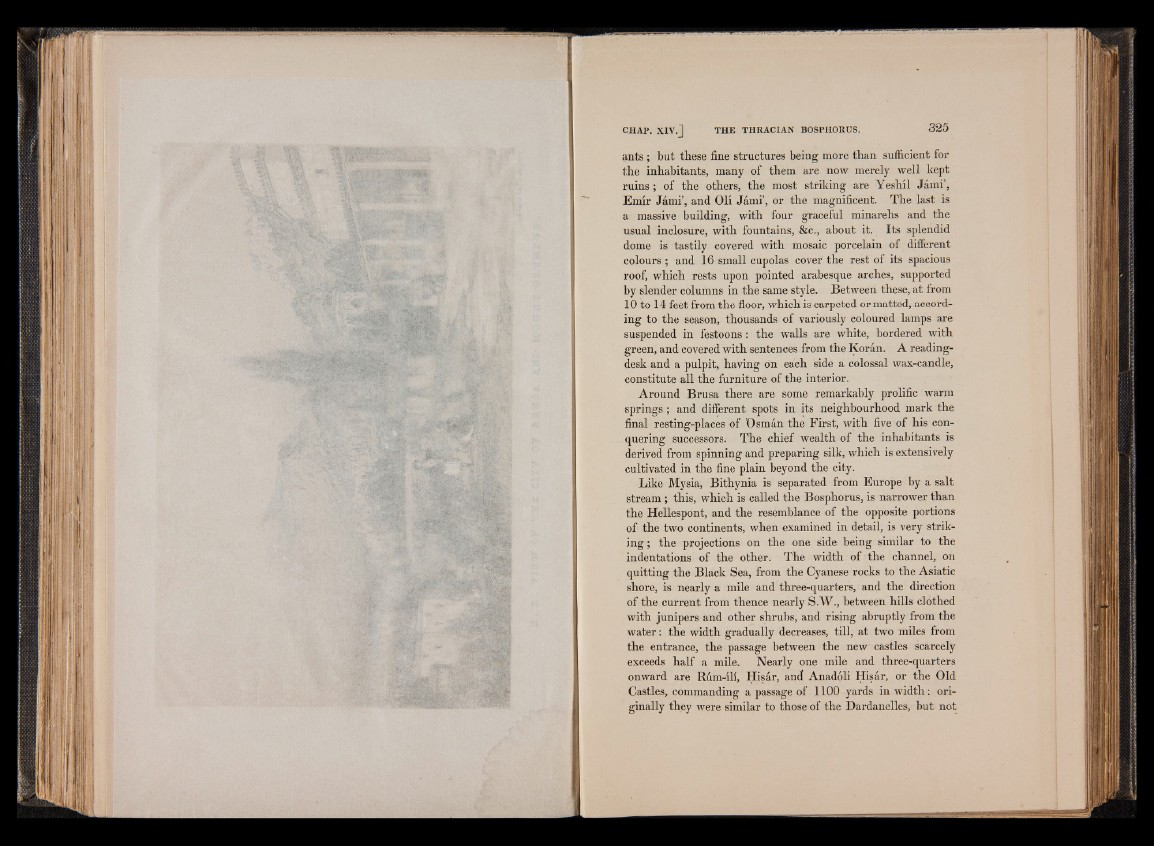
CHAP. XIV.]
ants ; but these fine structures being more than sufficient for
the inhabitants, many of them are now merely well kept
ruins ; of the others, the most striking are Yeshil Jami’,
Emir Jami’, and Oli Jami’, or the magnificent. The last is
a massive building, with four graceful minarehs and the
usual inclosure, with fountains, &c., about it. Its splendid
dome is tastily covered with mosaic porcelain of different
colours ; and 16 small cupolas cover the rest of its spacious
roof, which rests upon pointed arabesque arches, supported
by slender columns in the same style. Between these, at from
10 to 14 feet from the floor, which is carpeted or matted, according
to the season, thousands of variously coloured lamps are
suspended in festoons: the walls are white, bordered with
green, and covered with sentences from the Koran. A reading-
desk and a pulpit, having on each side a colossal wax-candle,
constitute all the furniture of the interior.
Around Brusa there are some remarkably prolific warm
springs; and different spots in its neighbourhood mark the
final resting-places of Osman the First, with five of his conquering
successors. The chief wealth of the inhabitants is
derived from spinning and preparing silk, which is extensively
cultivated in the fine plain beyond the city.
Like Mysia, Bithynia is separated from Europe by a salt
stream ; this, which is called the Bosphorus, is narrower than
the Hellespont, and the resemblance of the opposite portions
of the two continents, when examined in detail, is very striking
; the projections on the one side being similar to the
indentations of the other. The width of the channel, on
quitting the Black Sea, from the Cyanese rocks to the Asiatic
shore, is nearly a mile and three-quarters, and the direction
of the current from thence nearly S.W., between hills clothed
with junipers and other shrubs, and rising abruptly from the
water: the width gradually decreases, till, at two miles from
the entrance, the passage between the new castles scarcely
exceeds half a mile. Nearly one mile and three-quarters
onward are Rum-ili, Hisar, and Anadoli Hisar, or the Old
Castles, commanding a passage of 1100 yards in width: originally
they were similar to those of the Dardanelles, but not